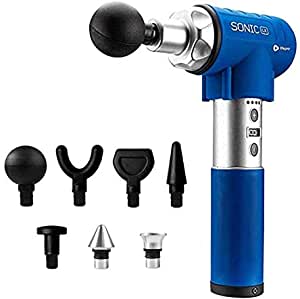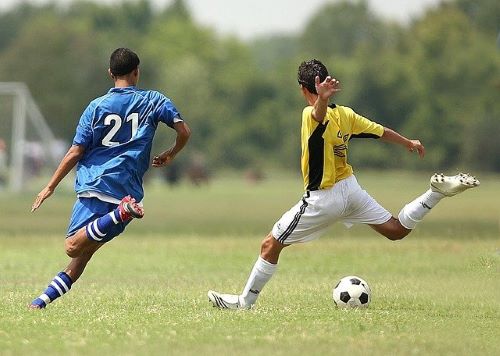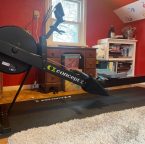If you have ever had a knot in your back, then it is likely that you are aware of just how painful they can be. They commonly appear when the small muscles in the back become overworked or overstretched – usually due to poor posture, stress, or strenuous activities.
A knot in your back may form in one particular location, radiating pain across your upper or lower back, or may occur throughout the entire area at once. The severity of knots ranges from mild discomfort to intense pain that keeps you up all night.
This article goes through some simple steps to get rid of knots in your back without necessarily visiting a doctor if possible. That said, consult with a doctor before any self-treatment methods are attempted for your own safety and ensure that you get rid of the knots in your back.

Best Ways to Treat and Prevent Muscle Knots
Massage
One good treatment for knots is massage, which targets the actual tissue of the muscle rather than the nerve endings around it, so it doesn’t hurt when someone presses on them. If you don’t massage your own muscles regularly (and sometimes even if you do), there’s a good chance that they’re tight and knotty. Usually, the knot is where the tightness is worst, but it isn’t always—sometimes there are hard spots that aren’t painful that may be knots, or sometimes pressing gently on a muscle can cause pain in that area without any evidence of knots. The best massage therapist will also check to see if you have trigger points anywhere else in your body, which you probably do if you have knots.
Suppose there’s no professional massage therapist close by or you can’t afford to go regularly. In that case, the next best thing is self-massage with a foam roller. That works well for most people because it targets your muscles without making them so sore that they hurt the next day, meaning there’s less risk for that acute pain that can keep your knots activated. You can also do it yourself with a tennis ball, but it isn’t easy.
You’ll notice an immediate difference when pressure is removed from the knot and when massage or rolling breaks up adhesions in the muscle tissue. This may have to be done every day for a few days before it makes a lasting impact. Once you’re regularly breaking up adhesions, though, you should be able to keep them away.
Apply Pressure to Trigger Points
Another way to get rid of knots is to apply deep pressure for a prolonged period at the trigger point, which can be a painful procedure that takes about 10 minutes. It works if done correctly, but it’s time-consuming and inconvenient to do on yourself every day (though some people do). If you get professional manual therapy, this is the technique they’ll use. For some people, it’s just too painful to do at home or not worth the expense.
This is the method I use, and I think it works the best. I lay on a tennis ball and have it press right against my knots, it hurts, but it works. You can also try using a lacrosse ball or a golf ball. They all work but provide a slightly different feel. If the pain is too much try doing it on a bed or couch so you have extra cushion for the ball and less pressure.
This method is painful, but I feel it is the fastest way to get rid of knots and is my go-to method.

Related: Best Massage Guns on the Market
Hot Shower
Taking a hot shower can help as well. It loosens things up and helps with blood flow, which is necessary for tissue repair.
It can be especially helpful if you have good water pressure and even a massaging showerhead, then you get a massage without having to pay for it.
If you don’t have decent water pressure, warm water can still help the muscles relax, but it certainly won’t work as well as it does with good water pressure.
Heating Pad
If you have muscle knots, a heating pad is good for relieving the pain and stiffness caused by the knots. The heat from a heating pad also helps relax tense muscles, which can make them easier to massage. Although it’s not a replacement for a massage therapist or exercise, using a heating pad can help relax tight muscles after spending all day at work.
The heating pad does not work as well as a massage does in my experience, but it can help, and it works well when used in combination with a massage.
Related: Ice Baths: Do they Work For Recovery?
Stick a Needle In It
A dry needle can break up adhesions in muscles and release trigger points more quickly than anything else. Once the area is numbed, your massage therapist or physical therapist inserts several needles into the knot(s) and twists them around to puncture the tissue surrounding it. A couple of minutes later, the knot is gone (or at least significantly lessened).
It’s probably not the cheapest way to get rid of muscle knots, but it definitely works. The problem with this technique is that you have to go to a trained professional because there are some serious risks involved if the needle is inserted incorrectly. If you can’t afford professional help, using a tennis ball or lacrosse ball on yourself is a good alternative.
How to prevent knots in your back
In a world where everyone is looking down at your phone and hunching over their computer it’s no wonder we get knots in our back. We all know we should be sitting up straight, with a natural curve in our lower back, but most of us don’t. Over time the muscles in our back become fatigued and begin to knot due to stiffness or injury.
Practicing good posture can help to reduce the number of knots that form in your back muscles. Good posture will increase the space between the vertebrae, allowing for more room for nerves and blood vessels to move around without being pinched. Your chiropractor can also teach you exercises and stretches to do at home to improve your posture and thus prevent knots from forming as frequently.
If you are sitting for long periods of time, try to get up and stretch every 20 minutes or so. If it is cold out, go indoors to a warmer room where you can stretch before going back outside. In addition, sit on the front half of your chair with your shoulders over the edge of the seat. This will help reduce pressure on your spine and reduce the frequency of knots.
Doing daily back exercises can also help. Some good exercises are planks, wall push-ups, stretching, leg lifts, crunches or abdominal curls. These exercises not only stretch muscles but strengthen them as well and promote good posture.
Conclusion
We’ve all felt the pain of a knot in our back. This usually occurs on one side of your lower back, but it can also happen in the neck or shoulder area. The first thing you should do is pull your stomach in and sit up straight. If this doesn’t help, try these tips to get rid of those pesky knots!

Ryan is a former college wrestler and lifelong fitness fanatic. He has run half marathons, done mud runs, placed in body transformation contests, coached wrestling, and now coaches girls’ soccer. Not to mention he has also tried literally hundreds of supplements over the years and has a vast and thorough supplement knowledge. He has written for Muscle & Strength, Testosterone Junkie, The Sport Review and other publications. He is also the editor-in-chief of this website and has over 25 years of experience in the fitness industry. Feel free to connect with him on his LinkedIn page below.








